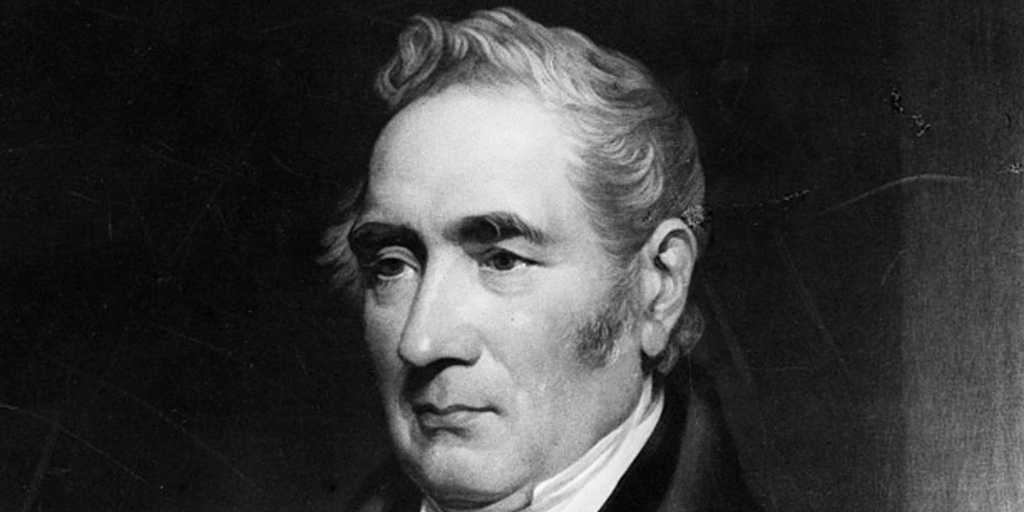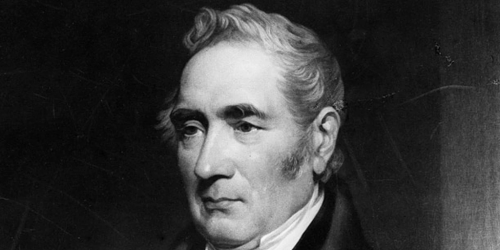
‘Father of Railways’ was one of Britain’s greatest innovators
So every week I’ve been blogging about some of the greatest inventions to come out of the UK and Ireland. It was only a matter of time before I’d write this: the Cornish pasty is up there with the greatest of the lot. They are delicious, they are hot, and it satisfies every need of my stomach, instantly. Today it’s a market worth an estimated £300 million a year. Fill me up. I was then told a whole blog about the Cornish pasty just wasn’t cricket, so here I go with an awesome segway….
Also from Cornwall, was a chap named Richard Trevithick, who would come up with the first realistic design for a steam locomotive.
His early work would go on to inspire the generation of engineers who built the country’s great rail network that powered the Industrial Revolution.
However, it’s actually the rags to riches tale of George Stephenson, the Father of Railways, which I’m interested in.
Growing up outside of Newcastle in the late 1700s, the Stephenson family were miners by trade.
Neither his mother or father could read but George quickly realised the value of education. Illiterate until the age of 18, he paid for night classes in his own time. It’s fair to say, he was a pretty determined fellow.
It was the railways where Stephenson would cement his place in the country’s history as one our greatest inventors of all time.
I give you the man’s CV:
- First proper job at 10 years old, driving the horses that carry the coal carriages on the tramway going past his family’s one room cottage.
- Put an end to horsepower with the invention of first commercially viable locomotive – Bulcher. With a top speed of 4mph, it was slower than a horse, but it could carry 30 tonnes. See you later ponies…
- Gave the people of the great city of Newcastle their nickname after inventing a safety lantern for miners that doesn’t explode – named the ‘Geordie’.
- Pioneered the famous Stephenson Rocket in 1829, creating the fastest train in the land at the time (a blistering 36mph). This propelled Stephenson to worldwide fame.
- Responsible for the world’s first intercity rail link between Manchester and Liverpool, which opened the following year.
- The first president of the Institution of Mechanical Engineers.
- Hobbies: grows straight cucumbers competitively. Yes, seriously. What a legend!
 The railways joined up the country in a way that had never been experienced before. Britain was transformed from a land of villages and farmland, into towns, cities and factories.
The railways joined up the country in a way that had never been experienced before. Britain was transformed from a land of villages and farmland, into towns, cities and factories.
The world was getting a whole lot smaller.
To get an idea of what this was like, let’s take a look at travelling between London and Birmingham. Nicholas Rothwell initiated the first regular weekly stagecoach between the two cities in 1731 – the journey would take two and a half days. Mind you, this was considerably quicker than its predecessors, which took up to four days or even longer.
Step in the Stephensons. In 1838 George’s son Robert, who has been described as the greatest engineer of his generation, was the technical brain behind a new railway that would link the two cities. They say the apple doesn’t fall far from the tree after all. When it opened on 17th September that year, the journey was reduced to just five and a half hours.
It is these leaps forward that fall in the same category as the invention of the motorcar, the jet engine, and in our era, the Internet. The time and distances to get people and information to another location shrunk dramatically, freeing up our time for more work and leisure activities.
It would be hard to imagine what the world would be like today without the railway. But what does the future hold?
High-speed rail is coming in the UK, but on-going wrangling from politicians, debate over the precise route it should take, and eye-watering costs mean this could be a way off yet. Canoe is my preferred mode of transport anyway…
Besides, the beauty of the Internet and Cisco Telepresence means I can see and chat to anyone in the world who’s connected at the other end. Woop!
Instead let’s take a look at some of the innovation on the horizon, which could make its way into our stations much sooner than a shiny new super-fast train.
The boffins down at Cisco’s innovation lab CREATE have been working on a proof of concept for Stations as a Service – which neatly joins together every piece of tech in a railway station under one roof.
The two-year project is being co-funded by Innovate UK and Railway Safety & Standards Board (RSSB), to see if there is a viable commercial and technical model for how this futuristic vision of the railway station will be achieved.
Everything from ticket barriers, to security cameras, and coffee machines could be connected together to great a much better experience.
It creates a range of commercial opportunities, as well as a host of benefits to the man stood in the rain waiting for the delayed 16.24 to Ipswich.
The tech realises it’s a bit of an inconvenience you have to wait an extra 30 minutes, so a voucher is pinged to your smartphone for a discount coffee and a Cornish pasty. Because the offer is so awesome, the security system alerts the shops that a big crowd of hungry folks are headed their way.
It could make the misery you experience at the train station all that more bearable, just by joining the dots of infrastructure together.
I like the sound of that. It’s innovation the Father of Railways himself would be proud of!
Tags:



1 Comments